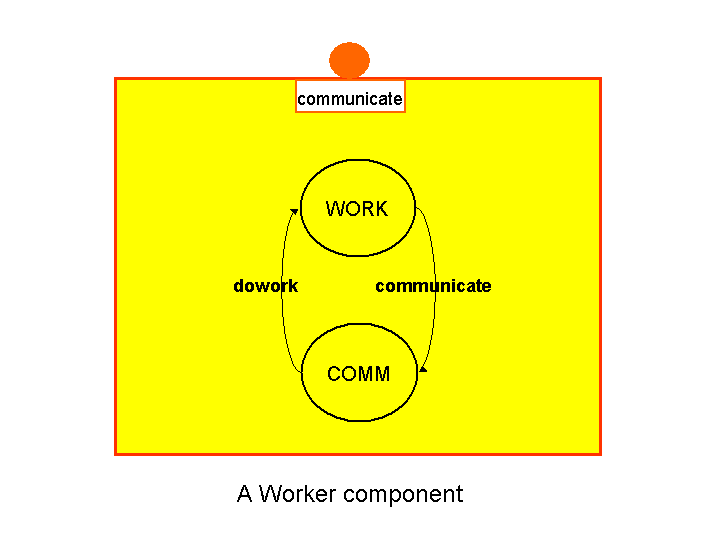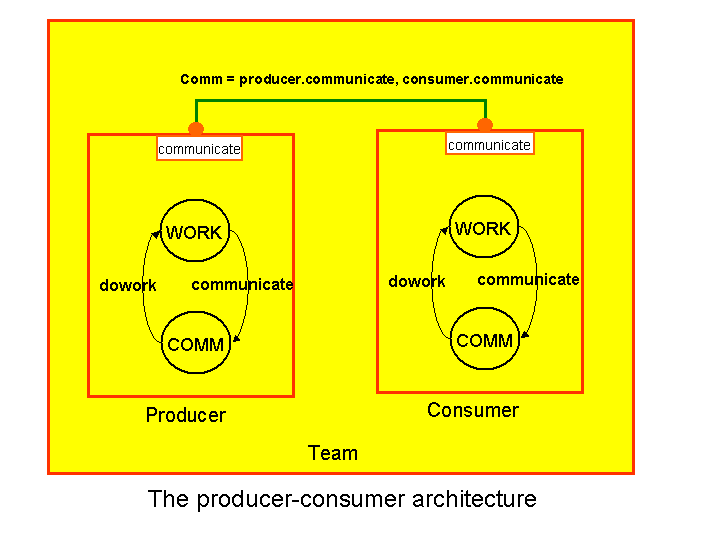BIP -- Incremental Component-based Construction of Real-time Systems
Producer-Consumer example
The example consists of two components, a producer and a consumer,
which can work
independently and communicate with each other through a rendez-vous.
They work and communicate alternately. We
model their behavior as a generic atomic component named Worker, as shown
below.
 |
component Worker port incomplete communicate port complete work behavior initial to COMM state WORK on communicate to COMM state COMM on work to WORK end end |
The Worker component consists of an incomplete port communicate, and a complete port work. It's behavior is represented by a transition system with two states, WORK and COMM.
The producer-consumer system is represented as a compound component Team, which instantiates two Worker's, namely a producer and a consumer . The connector Comm connects the ports communicate of the producer and the consumer components. In addition, there are singleton connectors (i.e containing only one port) prodWork and consWork, which consist of the work port of the respective components and do not need explicit synchronization.
 |
component Team contains Worker producer, consumer connector prodCons = producer.communicate, consumer.communicate behavior do {# printf("Communicating\n"); #} end connector prodWork = producer.work behavior do {# printf("Producer working\n"); #} end connector consWork = consumer.work behavior do {# printf("Consumer working\n"); #} end |
Steps to execute the application:
To generate the C++ code for the application,
$ bipc -f prodcons.bip --genC-top Team
To compile the application,$ make prodcons.bip.x
To run the execution,$ prodcons.bip.x
Ctrl-C to terminate. Back to examples


